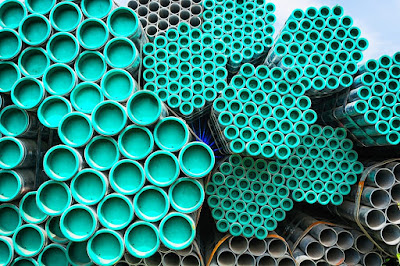Sustainability in Pipeline Infrastructure: Innovations and Best Practices
In today's rapidly evolving world, sustainability has become a paramount consideration across all industries, including infrastructure development. Among these critical infrastructures, pipelines play a pivotal role in transporting resources like water, oil, and gas. However, the traditional practices in pipeline construction and maintenance have often raised concerns about their environmental impact and long-term sustainability. In response to these challenges, the industry has been embracing innovations and best practices to ensure the development and operation of pipeline infrastructure align with sustainability goals.
Understanding the Challenges:
Pipe fittings have been the backbone of modern civilization, facilitating the transportation of essential resources over vast distances. However, conventional pipeline construction and operation practices have posed significant challenges to environmental preservation and community well-being. Issues such as habitat disruption, water pollution, and greenhouse gas emissions have underscored the need for a paradigm shift towards more sustainable approaches.
Innovations Driving Sustainability:
Advanced Materials: Innovations in material science have led to the development of high-strength, corrosion-resistant materials, reducing the environmental impact of pipelines while enhancing their durability and longevity. Materials like high-density polyethylene (HDPE) and composite materials offer superior performance while being more eco-friendly compared to conventional steel pipelines.
Smart Monitoring Systems:
Integrating sensors and IoT (Internet of Things) technology into pipeline networks enables real-time monitoring of operational parameters such as pressure, temperature, and flow rate. These smart monitoring systems not only enhance safety and reliability but also optimize resource utilization and minimize environmental risks by enabling proactive maintenance and leak detection.
Green Energy Integration:
With the global shift towards renewable energy sources, there's a growing emphasis on integrating green energy technologies into pipeline infrastructure. For instance, utilizing solar panels to power remote pumping stations reduces dependency on fossil fuels and mitigates carbon emissions associated with pipeline operations.
Nature-Based Solutions:
Embracing nature-based solutions such as green corridors and vegetative buffers along pipeline rights-of-way can mitigate environmental impacts, enhance biodiversity, and provide ecosystem services such as carbon sequestration and water purification. These green infrastructure practices not only promote ecological resilience but also foster positive relationships with local communities and stakeholders.
Best Practices for Sustainable Pipeline Development:
Comprehensive Environmental Impact Assessments: Conducting thorough environmental impact assessments (EIAs) prior to pipeline construction helps identify potential risks and impacts on ecosystems, water resources, and communities. Engaging stakeholders and incorporating their feedback into the decision-making process enhances transparency and ensures that environmental concerns are adequately addressed.
Adherence to Regulatory Standards:
Compliance with stringent regulatory standards and industry best practices is essential to ensure the safety, integrity, and environmental sustainability of pipeline infrastructure. Regular inspections, audits, and compliance monitoring help identify and mitigate risks while fostering a culture of accountability and continuous improvement.
Community Engagement and Consultation:
Building trust and fostering positive relationships with local communities through transparent communication, engagement, and consultation is vital for successful pipeline projects. Empowering communities through capacity building, socioeconomic development initiatives, and equitable benefit-sharing schemes can help mitigate social conflicts and ensure the acceptance and long-term viability of pipeline infrastructure.
Risk Management and Contingency Planning:
Implementing robust risk management strategies and contingency plans is crucial to mitigate potential environmental incidents and emergencies. Proactive measures such as emergency response drills, spill containment measures, and rapid response protocols minimize the impact of accidents and enhance the resilience of pipeline systems against unforeseen events.
Conclusion:
Sustainability is no longer an option but a necessity for the pipeline industry. Embracing innovations and best practices that prioritize environmental stewardship, social responsibility, and economic viability is essential to ensure the long-term sustainability of pipeline infrastructure. By integrating advanced technologies, adopting nature-based solutions, and fostering stakeholder collaboration, the pipeline industry can contribute to a more sustainable future while fulfilling its vital role in supporting global energy and resource needs.


.jpg)


Comments
Post a Comment